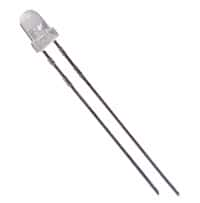Many of us are stuck with slow Wi-Fi, and eagerly waiting for light-based communications to be commercialized, as Li-Fi promises to be more than 100 times faster than the Wi-Fi connections we use today.
As advertised so far, most Li-Fi systems depend on the LED bulb to transmit data using visible light. However, this implies limitations on the technology being applied to systems working outside the lab. Therefore, researchers are now using a different type of Li-Fi using infrared light instead. In early testing, this new technology has already crossed speeds of 40 gigabits per second.
According to the Li-Fi technology, a communication system first invented in 2011, data is transmitted via high-speed flickering of the LED light. The flickering is fast enough to be imperceptible to the human eye. Although lab-based speeds of Li-Fi have reached 224 gbps, real-world testing reached only 1 gbps. As this is still higher than the Wi-Fi speeds achievable today, people were excited about getting Li-Fi in their homes and offices—after all, you need only an LED bulb. However, there are certain limitations with this scheme.
LED based Li-Fi presumes the bulb is always turned on for the technology to work—it will not work in the dark. Therefore, you cannot browse while in bed in the dark. Moreover, as in regular Wi-Fi, there is only one LED bulb to distribute the signal to different devices, implying the system will slow down as more devices connect to the LED bulb.
Joanne Oh, a PhD student from the Eindhoven University of Technology in the Netherlands, wants to fix these issues with the Li-Fi concept. The researcher proposes to use infrared light instead of the visible light from an LED bulb.
Using infrared light for communication is not new, but has not been very popular or commercialized because of the need for energy-intensive movable mirrors required to beam the infrared light. On the other hand, Oh proposes a simple passive antenna that uses no moving parts to send and receive data.
Rob Lefebvre, from Engadget, explains the new concept as requiring very little power, since there are no moving parts. According to Rob, the new concept may not be only marginally speedier than the current Wi-Fi setups, while providing interference-free connections, as envisaged.
For instance, experiments using the system in the Eindhoven University have already reached download speeds of over 42 gbps over distances of 2.5 meters. Compare this with the average connection speed most people see from their Wi-Fi, approximately 17.5 mbps, and the maximum the best Wi-Fi systems can deliver, around 300 mbps. These figures are around 2000 times and 100 times slower respectively.
The new Li-Fi system feeds rays of infrared light through an optical fiber to several light antennae mounted on the ceiling, which beam the wireless data downwards through gratings. This radiates the light rays in different direction depending on their wavelengths and angles. Therefore, no power or maintenance is necessary.
As each device connecting to the system gets its own ray of light to transfer data at a slightly different wavelength, the connection does not slow down, no matter how many computers or smartphones are connected to it simultaneously.

